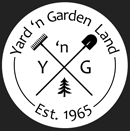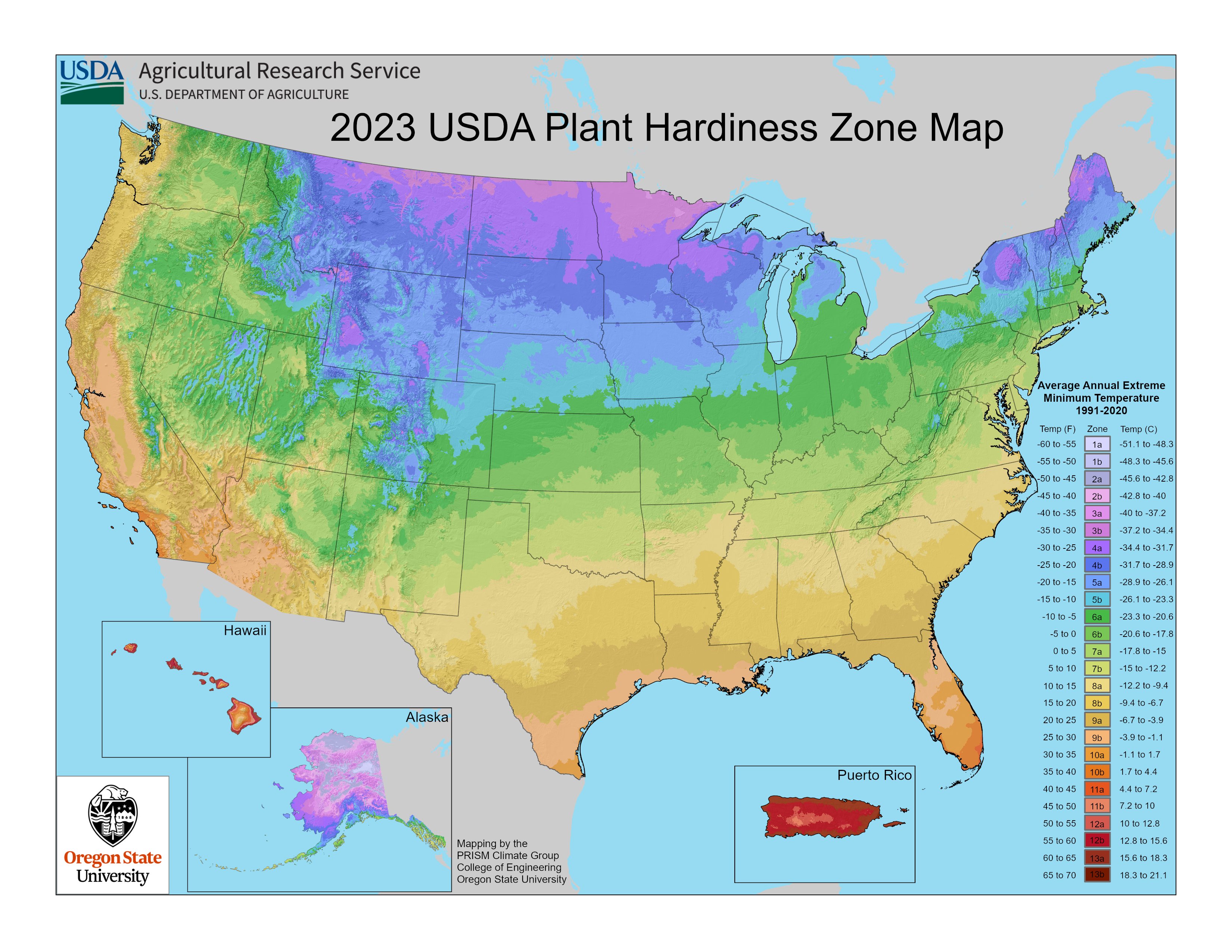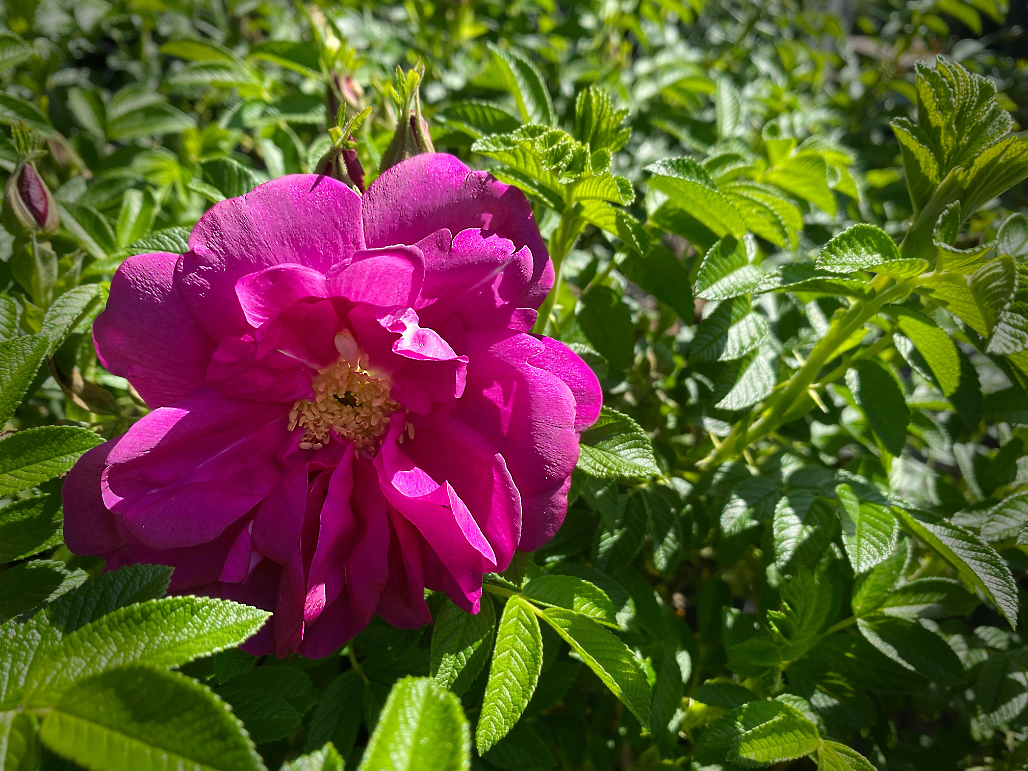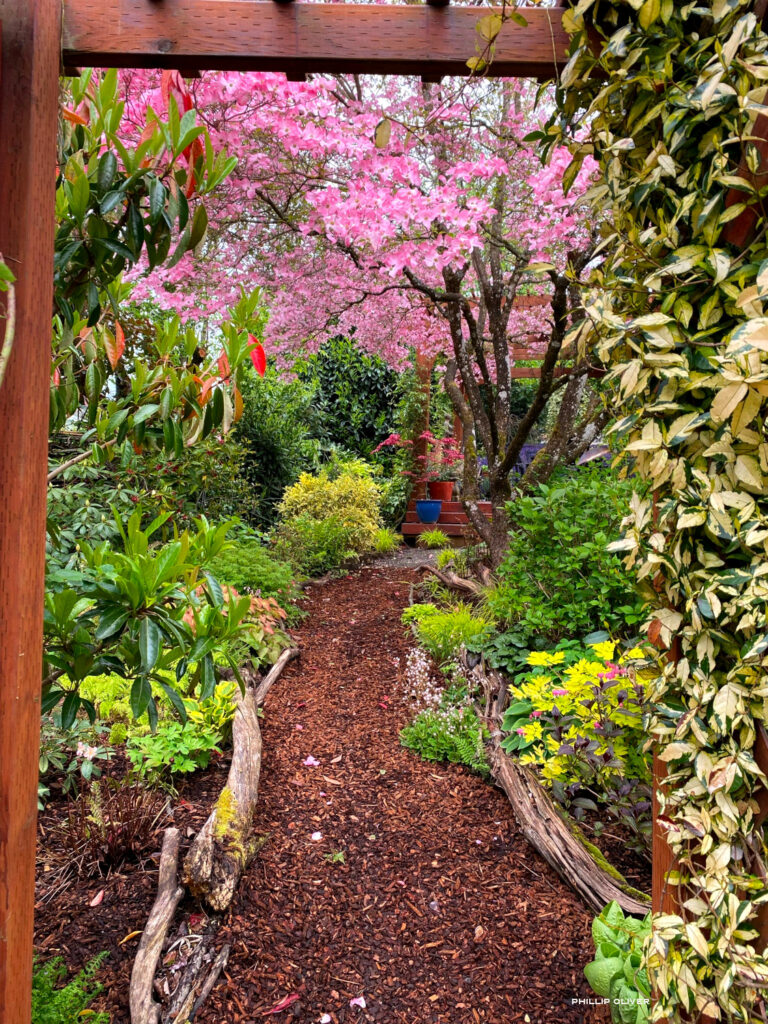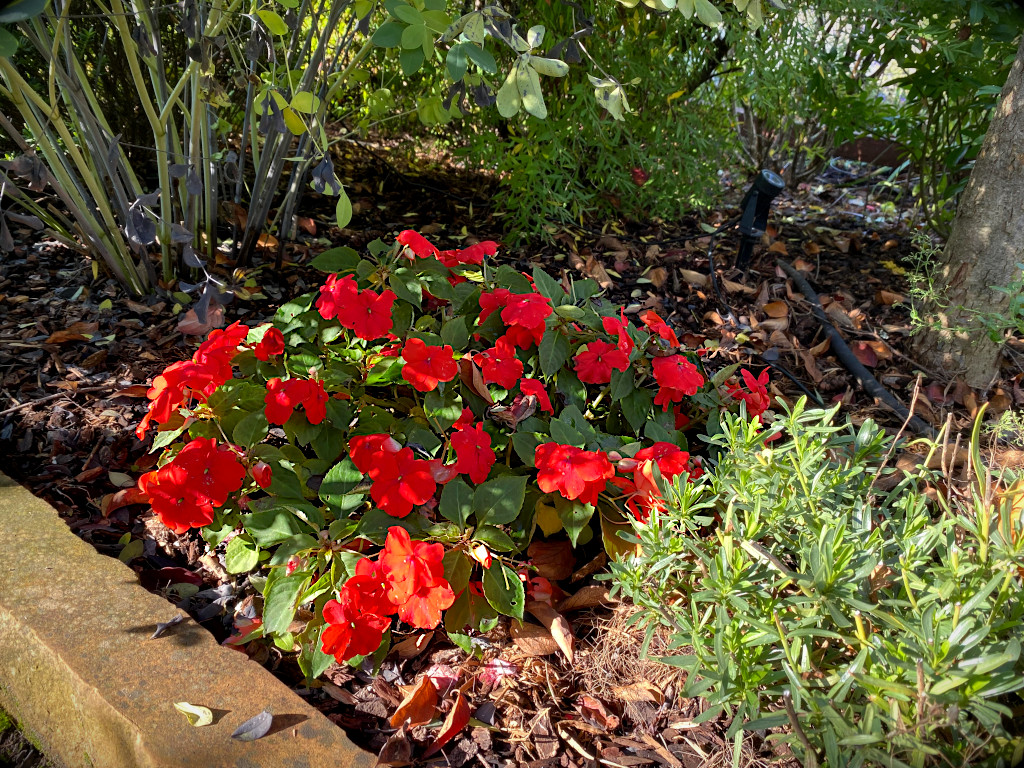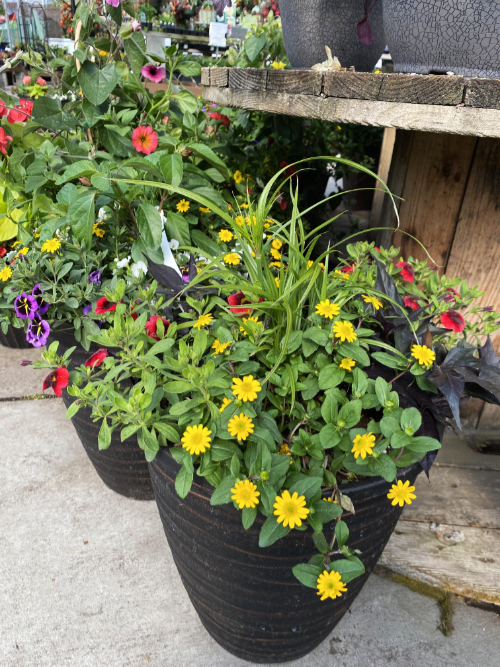2023 Plant Hardiness Zone Map
The U.S. Department of Agriculture (USDA) has just released a new Plant Hardiness Zone Map, updated from the previous map issued in 2012. The map is based on 30-year averages (1991–2020) for the lowest annual winter temperatures within specified locations and represents average extreme cold temperatures in specific regions throughout the United States.
What exactly is the meaning of “plant hardiness”? You’ve probably noticed that plant tags will give a zone number (such as “Hardy to Zone 7). Basically, the zone number refers to the coldest temperatures that a plant can withstand.
The Plant Hardiness Zone Map is comprised of 13 zones with each zone subdivided into “A” or “B” categories. Zone 1 begins at the extreme northern edge of the United States and the zone numbers progress southward to the warmest zone (13) which is Puerto Rico. Overall, the map reflects a 2.5 temperature increase. As a result, many people find that their previous zone designations have changed.
For the Clark County area, zone 8b is designated which reflects a 15-20 temperature range for average extreme lows during the winter months.
What does all of this mean for plant buyers? Generally, a plant with a zone number of 8 or less should be able to tolerate our winter temperatures. Zones 9 or higher indicate plants that are more suitable for regions south of our area.
The important thing to remember is that zone ratings should be used as a general guideline and not as a rule set in stone! The Pacific Northwest is unique because there are many regions with various physical features which result in a wide range of climate situations. Plants are also affected by other factors such as winter winds, wind chills and duration of cold. There will always be extreme circumstances! A most important factor is our wet winters which can impact a plant’s performance regardless of winter temperatures. Most of all, keep in mind that all gardens are different with varying microclimates in play. That desired plant that is designated for a warmer zone might very well do fine if situated in a protected spot in your garden.
